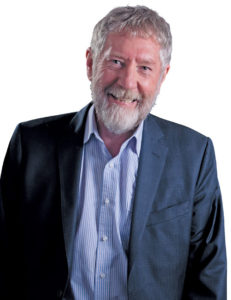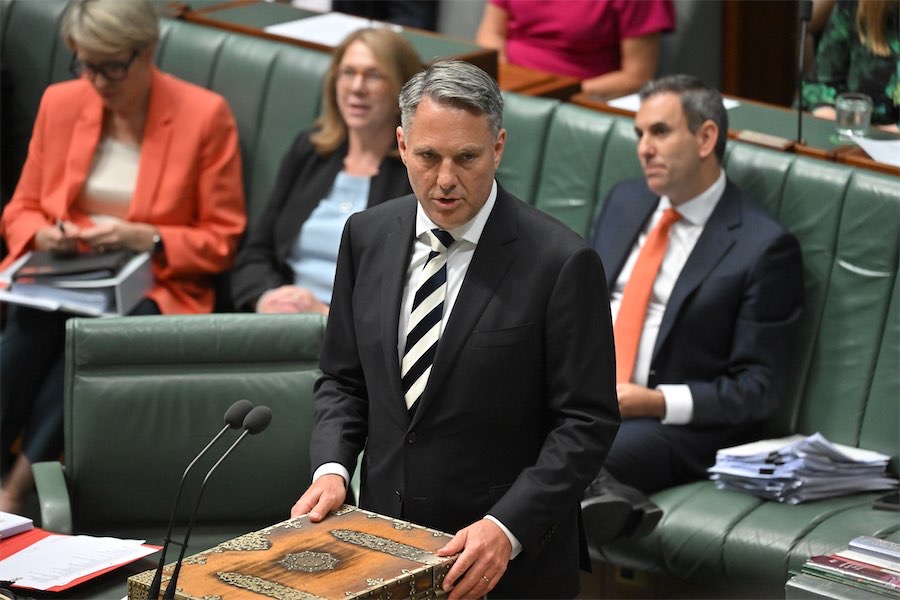
“There is overwhelming evidence that pets play a part in good health and well-being. It begs a question: where were the ministers for health and mental health when the boundaries for dog exercise were being drawn up?” writes political columnist MICHAEL MOORE
RED strikes the eye when opening a map of the “Dog Exercise Areas” published by the ACT government. Red is the no-go areas for dogs. And red dominates Canberra. This hardly speaks to Canberra being a dog-friendly city.

There is overwhelming evidence of the part that pets play in good health and well-being. It begs a question: where was the health minister and the minister for mental health when the boundaries for dog exercise were being drawn up?
When people are out with their dogs – they exercise more. Additionally, the more fun people have with their dogs, the better the bond and more effective the care, the greater the likelihood of responsible ownership.
The ACT government sugarcoats its thinking around responsible dog ownership when describing the “Canberra Dog Model”, which “sets forward a strategy for achieving this through a combination of education and awareness of responsible dog ownership and increased compliance and enforcement”. There are many sensible ideas in the model. However, these are undermined by the number of restrictions outlined by City Services.
The model looks to examples from Calgary in Canada. However, there are also many other international lessons missed from successes in the UK and Europe. In those places there are appropriately behaved dogs on public transport, in pubs, in public parks and in other relatively crowded public places. Not so in Canberra.
City Services Minister Chris Steel paints the picture of his intention to “reduce the number of off-leash areas and provide absolute clarity on the rules. For those who choose to do the wrong thing we will continue to focus on compliance”. The focus is so strongly on those who do the wrong thing.
Funds are needed to carry out Labor’s stronger compliance activities by the “dog police”. The answer – annual registration of dogs in the 2020-2021 year. More disincentives for owning dogs. Taxing good dog owners to be able to handle the tiny minority. If really needed, it would make more sense if the cost was distributed across the community.
In newer suburbs it is even more difficult for owners to enjoy dogs. The suburb of Whitlam, being developed off William Hovell Drive, is simply all red. No dogs! Not even on leads. Temporary?
Denman Prospect carries no colour at all. Dogs never off-lead! In Denman Prospect there is a site set aside for a school and playing fields. Logic would suggest colouring this area yellow – allowing dogs off lead except when there are recreational activities under way.
No-one debates that some areas are inappropriate for dogs to be off leads. The government points out that there are areas that have 1080 poison baits – specifically set up to deal with wild dogs. Understandable. There are areas where protection of specific wildlife is appropriate with Mulligan’s Flat as another example. However, the notion that dogs ought not be allowed at all is going over the top.
Anti-canine factions argue that dogs’ scent discourages wildlife. However, the evidence of this is very weak. In fact, Banks and others reported in the peer-reviewed “Australian Zoologist” in 2003 that “faeces from domestic dogs dropped in native habitats appear unlikely to deter small native fauna due to predator avoidance behaviours”.
Bannister et al in “Wildlife Research” (2019) go further, pointing to the problem of “creating a ‘predator-naïve’ population” when predator controlled environments are introduced.
Black Mountain and the Peninsula are red. No dogs at all! This makes no sense. The argument to protect wildlife is not sustainable. This area is an ideal place for walking. Indeed, an ideal place for walking with the “best friend”, even if restricted to an on-lead area.
The principles of the “Canberra Dog Model” are based on responsible dog ownership, a safe community and animal welfare. Who could disagree?
Ironically, the same model seeks to be “empowering Canberrans through responsible dog ownership for a safer, more pet-friendly community”. It’s not the principles that are the problem – it is the implementation.
The good news is that the model is open for further consultation. Comments can be emailed on communityengagement@act.gov.au
Who can be trusted?
In a world of spin and confusion, there’s never been a more important time to support independent journalism in Canberra.
If you trust our work online and want to enforce the power of independent voices, I invite you to make a small contribution.
Every dollar of support is invested back into our journalism to help keep citynews.com.au strong and free.
Thank you,
Ian Meikle, editor





Leave a Reply